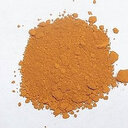Phytopreventive antihypercholesterolmic and antilipidemic perspectives of zedoary (Curcuma Zedoaria Roscoe.) herbal tea.
Kata kunci
Abstrak
BACKGROUND
Metabolic syndrome is an increasingly prevalent problem, not only in industrialized developed countries, but in developing countries as well. The modern healthcare to reduce the dysfunction of metabolic syndrome is burdened with great problems of unsafe medicines and certain degree of side effects. Medicinal plants and derived component products are becoming increasingly popular in modern society as natural alternatives to synthetic multiple drugs for the treatment of hypercholesterolemia and hypertriglyceridemia. The present research work was carried out to evaluate the zedoary (Curcuma zedoaria Roscoe.) herbal tea (ZHT) for antihypercholestrolemic and antilipidemic perspectives in discerning consumers.
METHODS
Zedoary rhizome dried powder (ZRDP) after proximate composition analysis was used to prepared ZHT samples as T1 (500 mg ZRDP), T2 (1 g ZRDP) and T3 (1.5 g ZRDP) in 200 mL boiling water for 5 minutes, respectively. ZHT samples were characterized for total phenolic compounds (TPC), DPPH inhibition, total flavonoids, color tonality (L*, a* and b* value), pH, acidity, total soluble solids (TSS) and sensory acceptance. Thirty mild-hypercholestrolemic male human volunteers were randomly allocated to three groups (G1, G2 and G3) and each group consisting of 1o mild-hypercholestrolemic male human subjects. The volunteers were assigned ZHT samples for consecutive two months. The blood drawn for day 0, day 30 and day 60 after an overnight 12 h fast was analyzed for serum parameters such as total cholesterol (TC), high-density lipoprotein cholesterol (HDL-cholesterol), low-density lipoprotein cholesterol (LDL-cholesterol) and triglycerides (TG) concentration.
RESULTS
The ZRDP possessed abundantly the crude protein (13.5 ± 0.68 %), total dietary fiber (21.86 ± 0.71 %), acid detergent fiber (13.22 ± 0.44 %), neutral detergent fiber (18.68 ± 0.53 %) and mineral contents. Highest TPC, DPPH inhibition and total flavonoids values were observed 9.74 ± 0.64 (mg GAE/g DW), 47.28 ± 1.62 (%) and 17.12 ± 0.75 (QE mg/g), respectively in T3. L* value was significantly (p ≤ 0.05) low for T3 samples. In contrast, a* value and b* value was significantly (p ≤ 0.05) higher for T3 when compared with T1 and T2. T3 samples showed lower pH (5.13 ± 0.13) and higher acidity (0.25 ± 0.08) values than T1 (5.64 ± 0.25, 0.17 ± 0.05) and T2 (5.42 ± 0.21, 0.21 ± 0.06), respectively. Similarly, an increasing trend in TSS contents was observed. Sensory scores assigned to color, flavor, aroma and overall acceptability attributes varied in a quite narrow range for all ZHT samples. The lowest evaluation scores were recorded for T3 samples. The G3 showed the more reduction in body weight and BMI during efficacy study as compared to G1 and G2. The decrease in serum TC for G1, G2 and G3 on day 60 was observed 9 %, 14 % and 17 %, respectively when compared with reference value at day 0. The consumption of T3 resulted in significant increase (6.8 %) of HDL-cholesterol after two months. A trend in decrease of serum LDL-cholesterol (5.6 %) and TG (12.5 %) was also observed after consumption of T3 at day 60.
CONCLUSIONS
The results of the present study conclude that the strong phenolic contents and radical scavenging activity of zedoary rhizome have protective role against hypercholesterolemic and lipidemic conditions.


